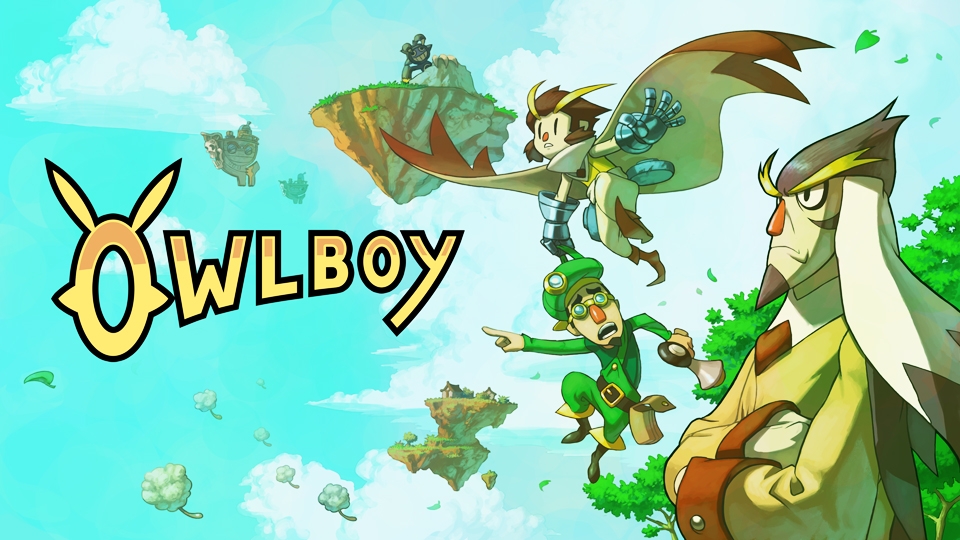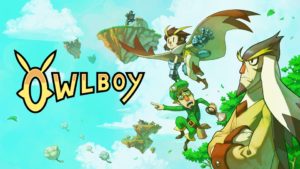

“Owlboy” began development in 2007, and didn’t see release until Nov. 1 of 2016. It is currently only available for Microsoft Windows, but the creators have expressed in interest in a console release.
By Zachary Landau | Staff Writer
If “Owlboy” is anything, it is certainly an interesting case study for what mistakes can happen over a long development time. Announced nearly a decade ago, the product from developer D-Pad Studio slipped in and out of the public’s eye and made a surprise return earlier last month. A deliberate call-back to the retro games of old, “Owlboy” is certainly aesthetically charming, but is ultimately mediocre to a fault.
The one word that best summarizes “Owlboy” is amateur which, by itself, can be both a good and a bad thing. Amateurs, hobbyists and the like can often make spectacular work, and sometimes that work can be some of the best out there. However, because they often do not have the experience to know better amateurs can miss details that are absolutely torturous when absent.
Take flying for example. Despite being the core mechanic of the game, the feeling of flight is almost never delivered during the ten hour run-time. To fly, all one has to do is press the jump button whilst in the air, and Otus, the main character, remains fixed in place. Without a slight rise or push forward, taking off feels wholly unremarkable and is treated as banal as any other jump.
Contrast that with, for instance, the Wing Cap from “Super Mario 64,” and the difference is night-and-day: The Wing Cap lets players launch off the ground with a rocket-like jump and glide around maps with a type of movement that is carefully crafted to give a sense of gravitas to the experience. Meanwhile, the most complicated aspect of flight in “Owlboy” is avoiding running into hazards. With no momentum, weight or anything preventing Otus from flying to his heart’s content, the feature feels more of a chore than an exciting prospect.
That’s not to say the game is not challenging, but its challenge is inconsistent. It manifests itself more in the conflict between its mechanics and its gameplay than any of the individual obstacles in the game. This is difficult to explain, but to elaborate:
The actual mechanics of “Owlboy” (the flying speed, the grabbing and dragging of characters and objects, the properties of your allies’ guns, etc.) are better suited for a slower puzzle game, which, thankfully, “Owlboy” mostly is. However, the meandering key-to-lock puzzles that make up a vast majority of the experience are punctuated with an absurd amount of combat that requires quick button presses and a nearly supernatural amount of precognition. Imagine playing any other puzzle game that switches to a bullet-hell every two minutes. That’s “Owlboy” in a nutshell: one game that is constantly brought down with the mechanics of another.
I could go on with the litany of minor annoyances (spawning on top of enemies, the ridiculous knockback, slow movement speed), but these grievances may have been forgiven if the story or characters were engaging and exciting. Unfortunately, that is not the case, and this is probably what makes me so furious about “Owlboy.”
Many reviewers have been praising these elements, claiming that the characters are unique and charming and the story shocks and touches the soul. But if you imagine any movie from the ‘80s targeted at children, then you know everything there is to know about “Owlboy.” The only original bone in the game’s plot is its premise: anthropomorphic owls and humans living together on floating islands. Everything else is predictable and samey to an almost insulting degree.
The art style itself is fantastic, and I would imagine it is what most of the development time was spent on. Beautiful architecture punctuates long, dark caves littered with foliage and relics lovingly detailed. However, you barely have any interaction with it; most of it is there for the sake of being there. Much of these vistas and ancient statues that loom in the background are never touched, and they only serve as eye candy. If I wanted to look at high-bit art, I could just use Google and not spend $25.
I have a suspicion that this lack of polish has just as much to do with the developers’ inexperience as the game’s nine-year development.Ideas and motivations are bound to change in such a long time, and it is only by the grace of God that the game turned out as well as it did. As back-handed as that compliment is, “Owlboy” is not as bad as it could have been, and that’s the best it can hope to be.



